“My eyes have been trained to examine faces and not their trimmings.”
– Sherlock Holmes, The Hound of the Baskervilles
I’ve discussed it before, but let us once again touch upon the topic of hanko-e. Literally meaning “stamp picture,” hanko-e is a style of character design in which all of the (usually female) faces have the same design, often to the point where characters remain distinguishable only by their hairstyles and other peripheral features. This is such a common practice for visual novels (especially eroge) that fans have even wryly designated a “Big Four” of hanko-e designers: Naru Nanao, Aoi Nishimata, Bekkankou, and Kazue Yamamoto. And of course, there are many more such artists, including Tony Taka, a prolific eroge character designer who has also worked on more mainstream works, such as Shining Hearts, as seen above.
So what happens when you apply this hanko-e philosophy to animation?
You might get something like the ED to Shining Hearts: Shiawase no Pan:
It’s a cheerful enough sequence in many ways, but there’s something about the way that the girls are animated that just doesn’t feel right. Maybe it’s the way that they stare at the camera, not blinking enough to be natural. Maybe it’s the way they all manage to have the same, perfect smile. Or maybe it’s the way they tilt their heads at the exact same time in that affected manner.
What’s clear is that these characters are stuck in the “uncanny valley,” in which people feel uncomfortable with human likenesses that are almost, but not quite, as realistic as a human being, much more than they would with something more stylized.
But what does this have to do with hanko-e? There are many reasons why artists employ it, but generally speaking, consistency is key. Modern-day eroge can have up to a dozen female characters and hundreds of CG illustrations. An artist well-trained in hanko-e design can ensure that all of these characters have beautiful faces that are on-model in every illustration, a matter of importance when collected CGs act as a reward for players.
The ED animation shows a similar sensibility. Pause at any close-up shot of their faces, and what you’ll likely see looking back at you is a photogenic face with a flawless smile, waiting to be made into a picture-perfect screenshot. Few are the awkward in-between frames, the natural yet unattractive contortions that make for a realistically-animated face.
In this way, each frame becomes a CG illustration. Each is a piece of art on its own, and sometimes, only the barest of differences distinguish one from another. But when every frame is polished to perfection, are we left with the beau idéal of animation? Or something else entirely?
—
Further Reading:
Not exactly reading, but this YouTube video serves as a cursory introduction to the “uncanny valley.”



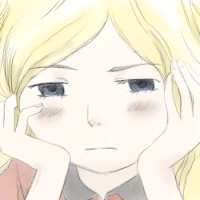
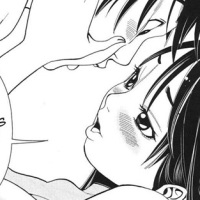
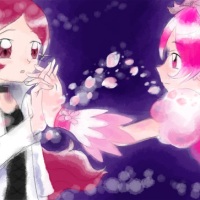
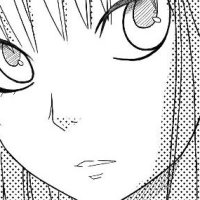


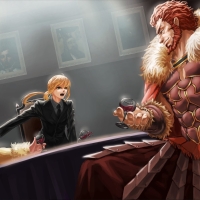

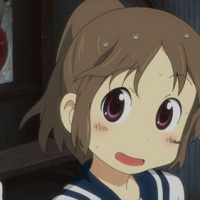


Interesting to think how deep into “2D” we are that we can apply the “uncanny valley” theory to faces that are failing to convincingly pass as anime character faces.
…Man, that is pretty weird, isn’t it? A person who’s new to anime would probably just be like “oh, those are just anime faces” and might not have any problem with it!
Ahhh, so THAT’s what was bothering me about this anime. The girls truly do all look alike, but flawless in their uniform perfection. I didn’t realize it was a common technique for eroge, so it was nice to learn what to call it. If only the personalities and story were as impeccable as the art style!
Full disclaimer: I literally fell asleep halfway through the episode and never finished it. I went back to watch the ED, though…
That’s a really elaborate way of describing sameface
Aw, c’mon, it’s less than 500 words! That’s like a record for this blog!
So these artists are employed because they are especially great at drawing this one face. That is a little bit disturbing. Then again the purpose of art is not to create something new or unique so I understand the use case.
Anyway this post reminds me of one I read a few months ago about comic styles. The way japanese manga art styles are described shares a similarity in my mind with your interpretation of this ED.
Thanks for the food for thought.
Disturbing, maybe, but at the same tone, it’s a fascinating diversion from Western treatment of character design in a lot of ways, and I’m glad I could find a way to talk about it just a little bit!
DAT ENDING! Sooo creeepy! I do love Tony Taya designs…but anime wise? Do not want…pus those girls never freaking blink adds to the creepy factors.
Bread the animation: Fails! xD
Funnily enough, when you actually count, they blink surprisingly a lot! Just not enough to look convincing.
Interesting criticism, although I haven’t seen the Shining Hearts.
Sameface in art is a pet peeve of mine: I think it’s a shortcut for comic book artists to draw consistently and meet deadlines, but at the same time, they compromise the quality/story for the sake of convenience, and end up cheating the reader and themselves.
As an aspiring artist, I try to draw individual, realistic faces, at the same time they’re stylish enough to meet comic book art aesthetic. It’s more difficult, but also more rewarding. :)
It may be a shortcut, but on some level, a lot of people like that anime characters have the same faces, and I think that’s something you have to reconcile sooner or later as an anime fan.
As an artist, though, I can definitely see how you might be opposed to the idea.
I don’t know what you mean by a “lot of people” and I am somewhat an elitist enough to dismiss the opinions of a large majority of mass culture.
And yeah, as an artist, it is rewarding to hear the observations of others pointing the distinction out on their own. Satisfies or feeds the Muse’s ego, much to my detriment. :-P
By a lot of people, I mean pretty much anybody who watches a lot of anime!
After all, sameface isn’t exactly a phenomenon unique to Shining Hearts or eroge or anything; it’s something that’s very real in some extent for most of the shows I watch, at least on an internal level (characters within the same series have the same facial design, but not necessarily among multiple series).
And if I thought of sameface as artistically devoid, no matter how good the background art/music/writing/direction/etc. was, I wouldn’t watch anime! And I hope other people feel the same.
Oh boy, the video has been blocked! Luckily, I caught it first.
I’m especially weirded out by their mouths. It’s like they keep their mouths in that exact triangular shape without any movement towards opening or closing. For some reason, I feel like the creepiness factor would be reduced if this was the same but with closed mouths… maybe it’s just more natural to lack significant expression when having a closed mouth, but an open smile suggests more vibrant expression that doesn’t seem to happen with these girls as they carry it plainly throughout the ED.
I’m not even that bothered by “sameface” syndrome, but these just look like one of those fake robot dolls that appears human but lacks any movement of facial muscles.
Ah, rats. I’ve replaced it with a Vimeo link for the time being; hope that doesn’t get pulled, too.
Yeah, I don’t think having the “same face” is the problem; heck, I know a lot of the anime I watch, even if they’re not at a Tony Taka level, as it were, does the same thing.
Hmm, that’s a good point about the smiles! I never thought of it that way, but it definitely makes sense now that you point it out.
Pingback: Altair & Vega » Aku no Hana is Good.*